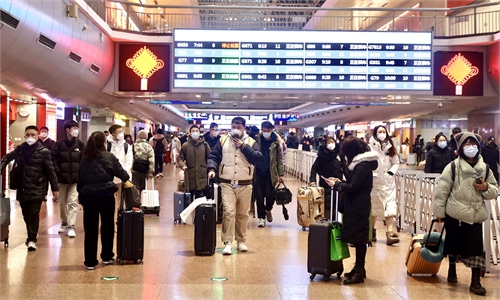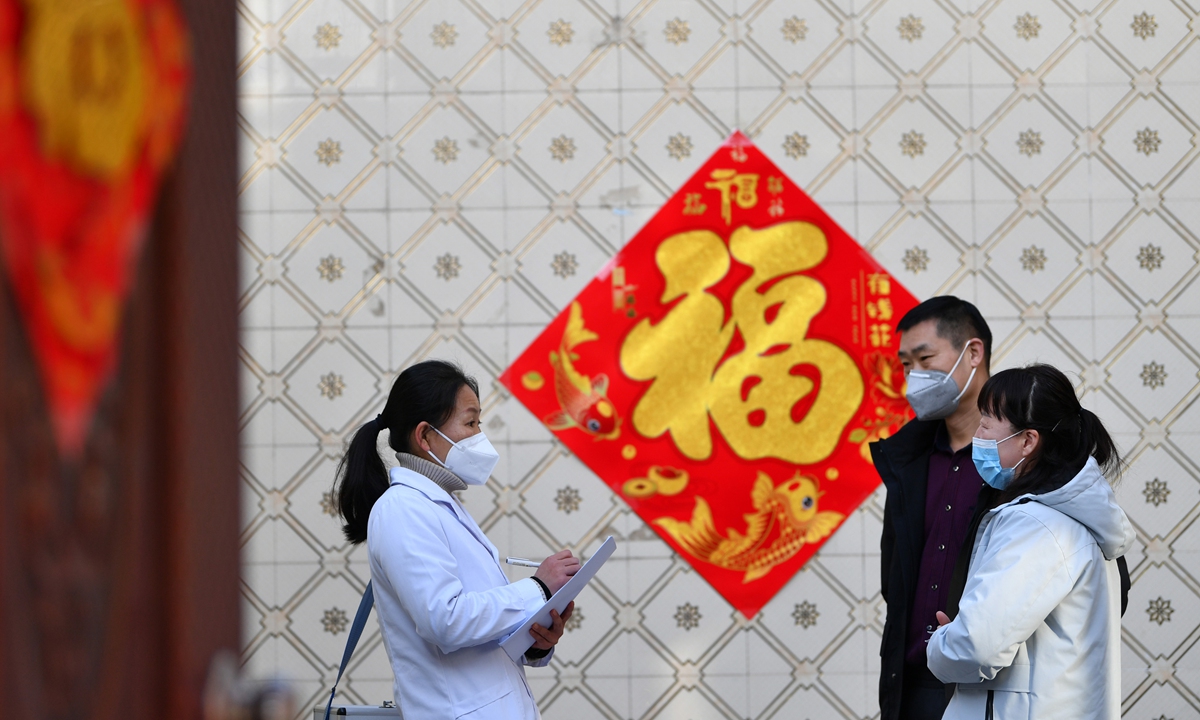
A rural doctor follows up with residents to check their health condition in rural area of North China's Shijiazhuang on January 21, 2023. Photo: VCG
Editor's Note:
This Spring Festival holidays were particularly special for people in China and beyond - it was the first holiday after China announced the downgrading of COVID-19 management from a Class A to Class B infectious disease in early January.
How did people spend the holidays? On the journey going back to their hometowns across China, the Global Times reporters extensively learned about how the Spring Festival was celebrated in different parts of the country, in big cities, small towns, villages, and hometowns of overseas Chinese nationals.
The Global Times is publishing a series of stories, under the theme of "Hometown Witness," to record what the reporters have seen in different parts of China, as well as to illustrating Chinese people's life after three years of fighting against the epidemic.
In this installment, we follow several reporters to visit their hometowns in rural China, to investigate how rural areas combat infections with relatively modest medical resources, and what a Spring Festival looks like for rural Chinese.
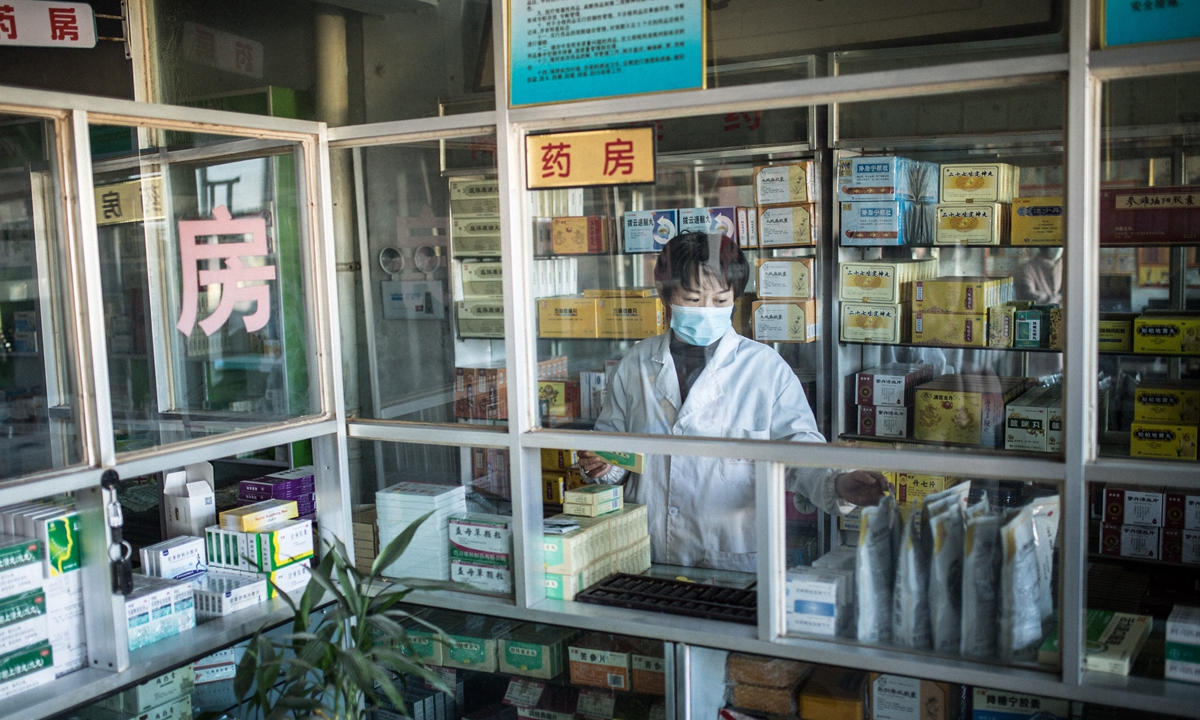
Traditional Chinese Medicine is used to help relieve symptoms caused by COVID-19 infections at a grassroots clinic in a small county of Juye, East China's Shandong Province on January 28. Photo: Shan Jie/GT
The Spring Festival is rooted in agricultural civilization. Chinese people believe the most traditional atmosphere of Spring Festival is in rural regions.
Since the prevention and control of the COVID-19 epidemic has entered a new stage, questions have been raised over whether the adjustment and transition of prevention and control measures in rural areas was smooth and orderly. Can villagers meet their medical needs? What special measures do villages and small towns have to deal with the epidemic?
With these questions in mind, the reporters returned to their rural hometowns for Spring Festival, and visited medical institutions of different levels to understand how people in these areas survived the epidemic and enjoyed the Spring Festival.
Villages pass infection peak
One Global Times reporter visited a health center of Caoji village under the renowned tourist attraction - the Pingyao ancient city - in Shanxi Province. The doctor at the facility told the Global Times that the village had passed the peak of COVID-19 infection a month ago, and no new cluster of infections had occurred during the Spring Festival holidays.
"Some villagers showing COVID-19 symptoms were treated here with traditional Chinese medicine and they recovered quickly. Some severe patients who had been treated in city hospitals came here for a second opinion and they are now much better. Before the Spring Festival, medical supplies received from the local government were distributed to villagers," the doctor surnamed Xu told the Global Times.
The Global Times reporter visited several families at the village and learned that they received fever and cough medication. They said they didn't know whether they had COVID-19 or a cold because they didn't take an antigen test, but they had recovered and were ready to embrace a new life.
In East China's Anhui Province, the Global Times reporter learnt that there were few patients in a local hospital in Yangliu village under the administration of Xuancheng city, in the southern part of the province, during the Spring Festival, as peak infections occurred before the holidays. In the nearby Xuanzhou district, also in Xuancheng, the epidemic situation is similar, with no new clusters of infections reported.
"The peak of infections passed around two weeks before the Spring Festival holidays and the situation is relatively stable during the holidays," a local hospital employee surnamed Zhang in the Xuanzhou district told the Global Times. Zhang said that all 800 beds and all the medical staff at this hospital were in full play in late-December when the region saw a peak of infections.
Despite the epidemic being stable, the hospital still had emergency contingency plans in place during the holidays including round-the-clock staff and sufficient medicine stocks, Zhang noted. For high-risk inpatients such as the elderly and the patients with serious underlying conditions, the hospital would ensure they could get anti-viral medicine in time, according to Zhang.
With the experience in facing the peak infection in December, sufficient medicine and local treatment mechanisms, Zhang said they were confident to face the epidemic.
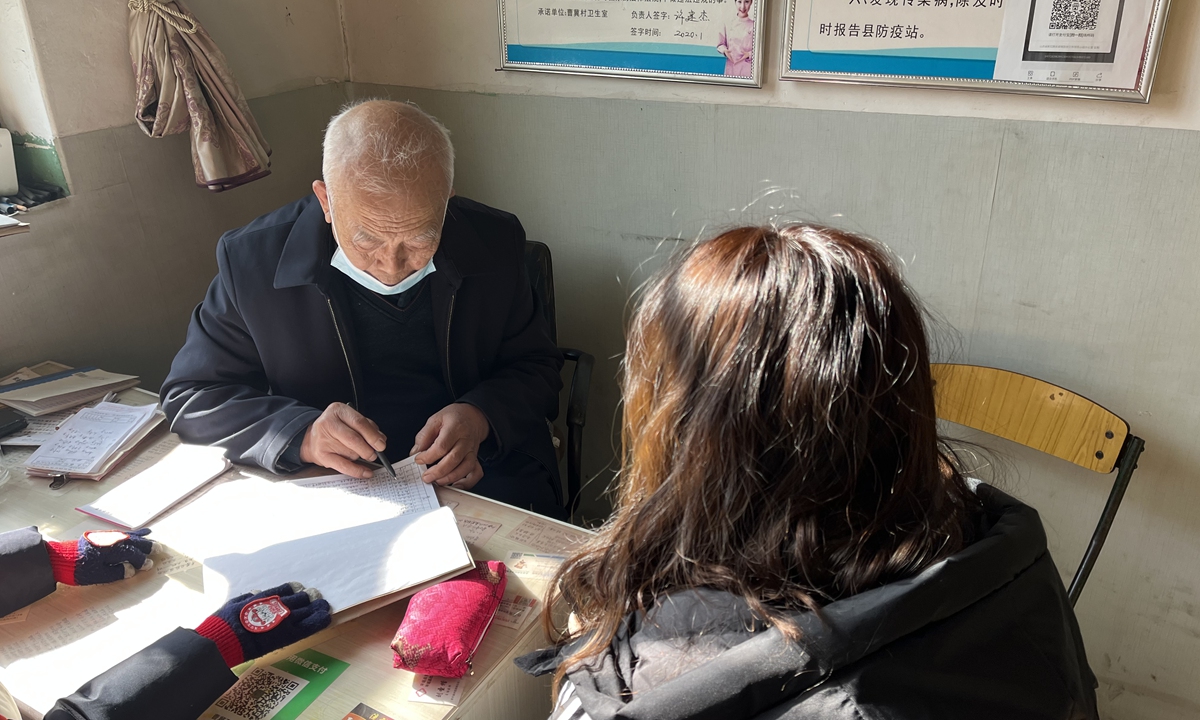
Global Times reporter Cao Siqi talks with a doctor surnamed Xu in a health center in Caoji village, Pingyao ancient city under Northwest China's Shanxi Province on January 25, 2023. Photo: Courtesy of Dong Chaochao
Triage treatment works in practice
The Global Times visited a hospital in Shuikou township in Southwest China's Chongqing on January 23. Wang Hailin, the hospital head, showed the Global Times a CT scan room which is connected to county-level hospitals. Patients' CT scan results are simultaneously viewed by medical experts from the county hospital, which has better equipment and resources. Once the patient is diagnosed as with severe symptoms, he or she will be transferred to the county hospitals within 20 minutes, said Wang.
Wang's hospital is equipped with 30 beds, most of which were empty when the Global Times reporter went to visit.
Wang said most of the patients, who are sent to his hospital for treatment, recovered within a week. He also said the local government sent them two oxygenators in December 2022, making the total at the hospital six, which is enough to help patients recover.
Wang said that COVID-19 infections had ebbed away in this small town two weeks ago, and fever clinics currently receive less than 10 people per day. He said the hospital made contingency plans by asking all employees to be on standby 7/24 in case the caseload surges during Spring Festival. "But there's no huge outbreak currently and things are so much better than we had previously anticipated."
The hospital also has an abundant stockpile of medicines, including ibuprofen and China's own homegrown COVID-19 antiviral Azvudine.
In early January, Nie Chunlei, director of the Grassroots Healthcare Department of the National Health Commission, told a press conference that grassroots authorities are required to expand emergency transport capacity as each rural and township clinic should be equipped with at least one ambulance, and make sure that emergency calls can be received 24 hours a day, and that vehicles can be dispatched quickly, he said.
For elderly residents who are infected and also suffer from chronic obstructive pulmonary disease, diabetes, cardiovascular disease, and other underlying conditions, they should be referred to medical institutions with treatment capabilities as soon as possible, and can be directly transferred to tertiary hospitals, he said.
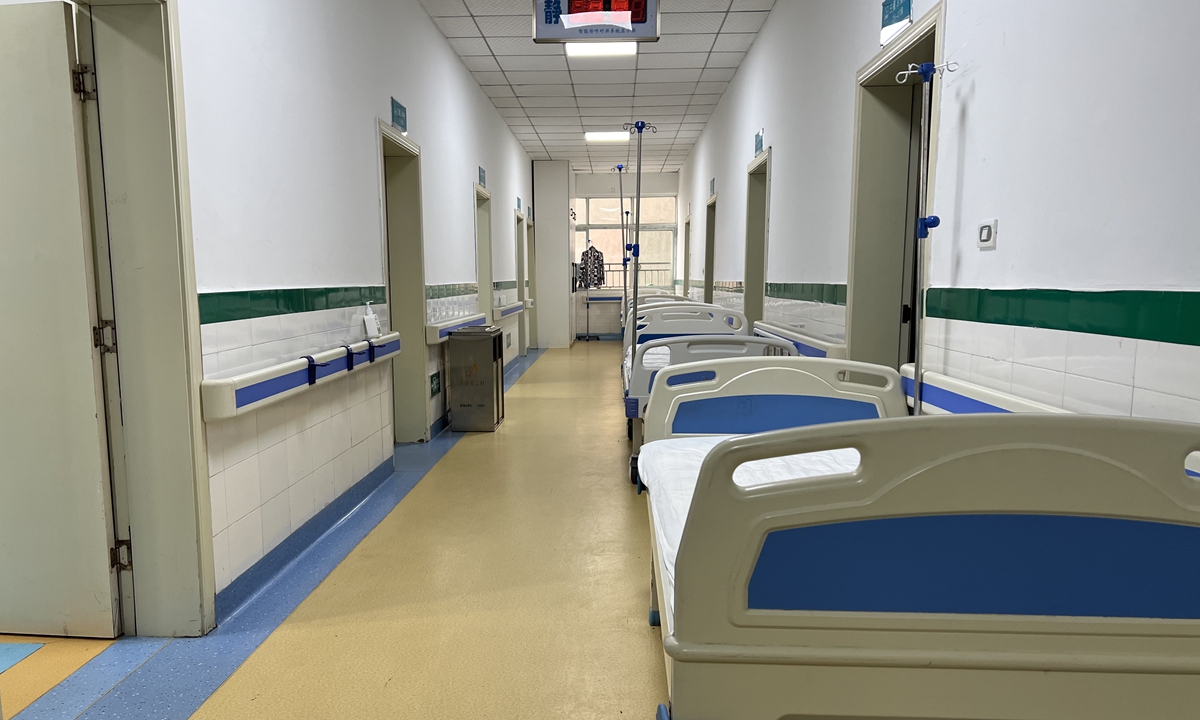
A photo taken at a township hospital in Shuikou, Chongqing on January 23. Hospital beds are mostly empty after COVID-19 infections ebbed away in this small town two weeks ago. Photo: Zhao Yusha/GT
TCM supports fight against virus
Doctor Shan Changping is a legend in the small county of Juye, East China's Shandong Province.
The TCM doctor's prescriptions are very effective in alleviating back pain, hemiplegia, and other diseases. Locals in the nearby neighborhood would visit him whenever they had any sort of minor ailment.
When the wave of COVID-19 infections hit Juye in December, his small clinic, just opposite to the best elementary school in town, was full of patients, experiencing symptoms such as cough, headache, and fever.
"We had hundreds of patients visiting every day during the peak period," Shan told the Global Times reporter, "before that, we only had dozens maximum."
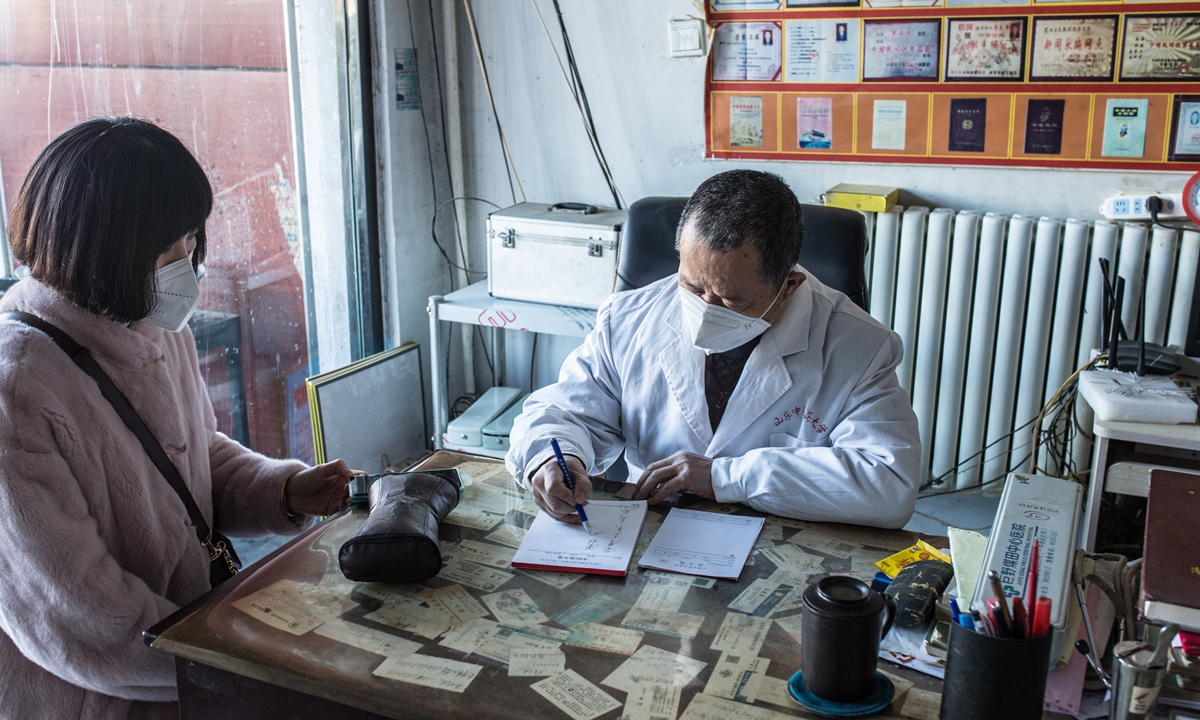
Traditional Chinese Medicine is used to help relieve symptoms caused by COVID-19 infections at a grassroots clinic in a small county of Juye, East China's Shandong Province on January 28. Photo: Shan Jie/GT
His clinic has only one room, partitioned by shelves and boards into a consultation area, a treatment area with four beds, a TCM pharmacy, and a Western medicine pharmacy. The walls are covered in pennants expressing gratitude from patients.
When the two major public hospitals in the county were stressed with COVID patients, the clinic was nearby people's most trusted source of aid.
Shan, with dozens of years of experience in applying TCM methods on his patients, formed his own philosophy in dealing with the virus. He referred to a Qing Dynasty (1644-1911) medical book about the prevention and treatment of respiratory infectious diseases, and invented a recipe that has proven pretty effective in the prevention and symptom relief of COVID-19 infection.
"In this epidemic, the focus is on supplementing oxygen and assisting qi. Eating, drinking, and resting more, and maintaining a comfortable mood are important in strengthening physical fitness and improving immunity," he explained.
Among his prescription consisting of 18 herbs, astragalus, for instance, is to lift qi, reed root can relieve nausea, buffalo horn can detoxify, and loquat leaves can relieve cough. Patients need to have the medicines twice a day, which cost about 15 yuan ($2) each time.
"We had this prescription long before the breakout of the infections, but at that time we did not know if it would work well or not," Shan said, "After the wave of infections, we know it is very effective."
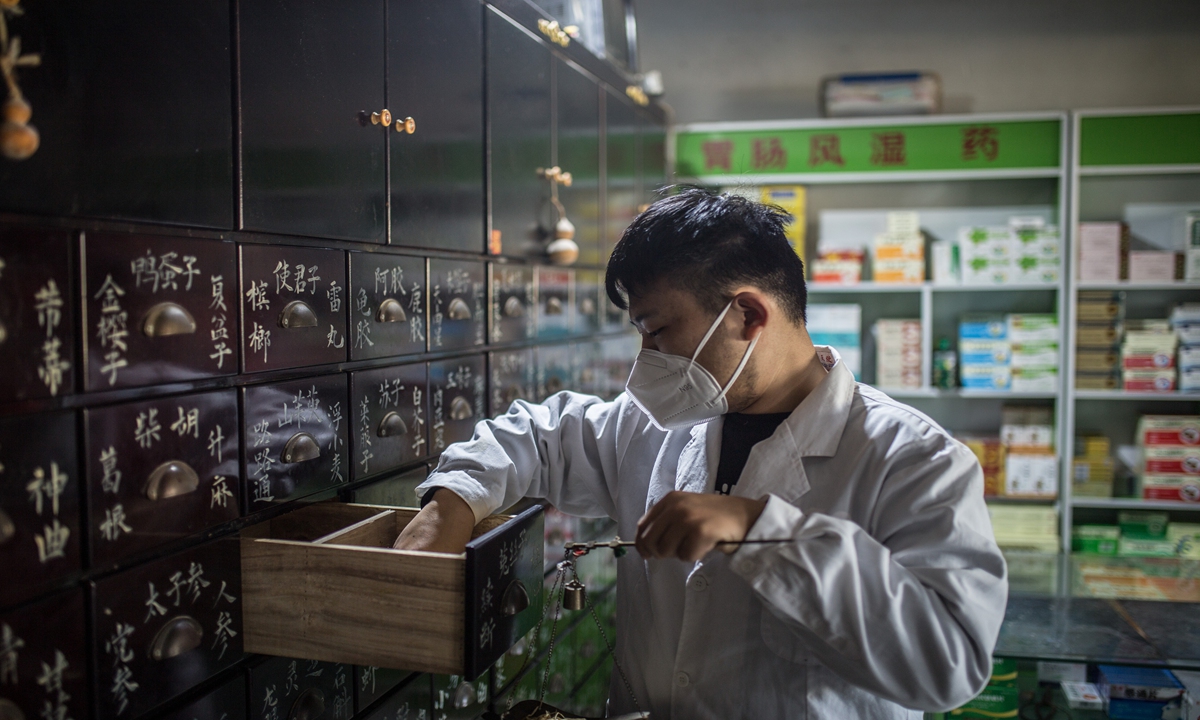
Doctor Shan Zhengxi prepares herbs to treat COVID-19 infection symptoms at a clinic in Juye county, East China's Shandong Province on January 28, 2023. Photo: Shan Jie/GT
Residents in the neighborhood trust the TCM deeply. They told the Global Times that people who had received Shan's prescription could recover in almost two days.
Actually, at the very beginning of the COVID-19 epidemic in Wuhan, in Central China's Hubei Province, China started to use TCM to support treatment, combining it with Western medicine.
TCM is widely used in the global anti-pandemic fight since the onset of COVID-19, proven to be remarkably effective. The World Health Organization (WHO) confirmed in a report that TCM is beneficial in the COVID-19 treatment, particularly mild-to-moderate cases, the Xinhua News Agency reported.
The proper use of TCM for home-based treatment can relieve the pressure placed on medical institutions and medical resources, as China shifts its focus of its COVID-19 response strategy from infection control to case treatment to prevent severe cases, said Huang Luqi, deputy head of the National Administration of TCM earlier this month at a press conference.
On the day when the Global Times reporter visited the clinic during the Spring Festival holidays, it was virtually empty.
"No news is the good news," Shan said.
